Samsung S20 Ultra vs iPhone 11 Pro Max / Note 10 Plus / Huawei Mate 30 Pro Battery Test By Mrwhosetheboss
It's been a long time coming, I'm a little late to this one, but welcome to the complete battery comparison between the e Samsung Galaxy s, 20 ultra the iPhone 11 Pro max Samsung Galaxy note, M, plus of all we made 30 Pro and Google Pixel for Excel, and these smartphone names are getting way too long. I've calibrated all the phones in terms of settings screen, brightness and speaker volume, which is set to 50% so time to unplug and to kick things off, TikTok I have to say it's not an app that I use, but a lot of people do so as we're trying to simulate a normal usage case. It makes sense to have it here now. If we start with the battery specifications. Things look great for Samsung. This new ultra smartphone packs, a five thousand William hour cell, we're talking top five percent of smartphones in terms of capacity, and that makes the three phones in the middle look pretty small and the pixel for Excel on the end.
Looks tiny! As soon as we introduce the display! Specs, though you can see why this is gonna, be a fascinating comparison, while the ultra does have the biggest battery. It's also got the largest display at six point, nine inches and the highest refresh rate at 120 Hertz. So if you didn't know that means that the screen on that phone refresh is a hundred and twenty times per second, which compares to sixty the kind of going standard for the three phones in the middle and then the pixel four, on the end that she has a ninety Hertz panel and speaking of the pixel four on paper, things don't look too great for that phone, the smallest battery tick, a high screen refresh rate, also tick, and on top of that it ships with the highest default screen resolution, which is yet another drain on the battery and with the Pixel 4 XL. Unlike a lot of Android phones, you can't actually turn that resolution down, even if you wanted to I say that. But if you take a look at the battery percentages of each phone as of right now, there's some interesting stuff going on the Pixel 4 XL is actually not at all in last place.
It's the galaxy s 20 ultra, that is which might be a little surprising, but this could change over the course of the test. The other interesting thing going on here is, if you take a look at the iPhone 11 Pro max, that is still on 99% and to be honest, I don't buy it I, don't think it's at all possible that the s20 ultra here has lost 13 percent a battery in the time that the iPhone has lost one or two as of now. What I would guess is that Apple is probably programmed the battery indicator to not fall as quickly towards the start, just so that it doesn't alarm people the second they pull their cable out, but of course this won't affect the end result of this test, because when the battery's dead it's dead also, last time I mentioned this site promise. There is a giveaway running for a Galaxy S 20 ultra. So all the rules for that are in the description.
No, if you take a look at the bottom row of specifications under each phone, you can see the chipset each one is powered by as well as the amount of RAM and there's quite a disparity. I, don't actually remember the last time. I did a battery comparison like this, where all five phones are powered by different chipset, but that's what we got going on right now, and it gives you an idea of just how many factors there are when it comes to influencing battery life. Of course, battery capacity is one of them, but it's display it's chipset. It's RAM, it's software and I mentioned the software in particular, because people underestimate software and how much of a role it has on battery life see Samsung software has been okay, it's definitely improved a little over time, but its nowhere near as aggressive when it comes to battery management as Apple's iOS or while ways Mew what I mean by that is historically, while way, software has been quite quick to shut down applications, you're done with and perhaps snooze background processes.
So this kind of stuff can lead to longer battery life, whereas Samsung software has traditionally tried to keep everything open, anyways, not sure if you've been keeping track of the applications. I've been running on all the phones, but now we're on the camera, so we're on photo now we're going to video and recording 4k video continuously on all of them. This is one of the most demanding things you can do on a phone. It generates a lot of heat and put strain on the memory, because you've got to save big files quickly and the chipset. It's not a surprise, then, that the numbers in terms of those battery percentages have been flying off, although you might be starting to notice a bit of a trend.
You've got two phones at the top: the iPhone 11 Pro Max and the Huawei Mate 30 pro in kind of like a middle band. There's the Galaxy, Note Templar and then right at the back. You've got the s20 ultra with the pixel for Excel. Although Samsung has now overtaken the Google, which is the result that I was expecting once like work, you might have noticed if you're credibly observant is that the Galaxy Note m+ has bars of signal in its status bar now it doesn't actually have a SIM card in none of these phones do I've been quite careful to make sure the settings are as similar as they can be, but Samsung's software just sometimes shows it. It's a weird glitch, although now I think about it, you could be in quite the surprise in a time of emergency, if you've also somehow all been paying attention to the clock on the far right, you might have notice.
We've passed the four-hour mark, that's actually quite impressive, considering even the pixel for Excel in last place is still on 40% I, always say on these tests. If a phone can last five continuous hours, that's good battery life, that's the kind of battery life that can generally get you through a day easily if it can last six continuous hours. That's perfect 7 super impressive and anything above that what we can get to it. If we get to it, I should also address. You might have already noticed that the Galaxy S 20 ultra I'm using is powered by the Enos chip.
That's the one we get here in the UK, but if you're in the U. S. you'll have a Qualcomm powered variant which will perform slightly differently on battery tests, but I, don't imagine it would be a day and night difference. After all, the software store the same. The battery capacity still the same, and you still have that incredibly draining display on this phone between the iPhone and the Huawei.
This is neck-and-neck. This is incredibly close, which is the exact same thing. I noticed last time, I compared those two phones where it literally came down to the last few minutes that we saw a winner, and it's becoming quite clear in this test that those two phones are in a league of their own, but to be fair, the galaxy s, 20 I'm sure if you turned it down to a more normal screen, refresh rate 60 Hertz like those two phones, it might even be class-leading, but on balance, I think the question more people want answers to be: if I use this phone on 120 Hertz will I still have good battery life. You've got to remember that these 120 Hertz panels they're one of the biggest selling points of this Galaxy, has 20 phones. So if you're going to buy those phones and not use that high refresh rate you're missing out a bit on what you're paying for but to come back to that question, do you still get good battery life on 120 Hertz? The answer has become a very resounding yes.
Taking a look at the clock on the right-hand side well, well, past the six-hour mark and the pixel is actually just died. Right now, which actually supports a lot of the articles I've seen recently that pixel battery life has improved over the lifetime of the phone see when the pixel four launched. Those phones were slated for their battery life like it was not pretty, but right now having just performed over six hours. Twenty, that's incredibly solid. That is comfortable to the point where I'd be happy recommending the pixel for Excel as a reliable battery phone, and the ultra is called predate to these three phones remaining, it's pretty clear which one's going first, but after that, it's still fairly close between the iPhone in the hallway, although in that time always gained about a five percent lead.
No last time, I compare these two phones. They were basically tied in the end, the iPhone kind of edged it out by a few minutes, but it was close enough that it's perfectly possible that trend could be reversed because we're running completely different applications. This time round, and you've got to remember since launch. Both friends have had a whole multitude of updates and that can also improve battery life anyway. You've probably had enough of staring at slabs of glass and battery indicators.
So what were the results? Well in fifth place, pixel for Excel with six hours and 26 minutes. I've said this before I'll say this again I'm impressed. Fourth was the s20 ultra and on one hand, yes, it's fourth place, but on the other hand, as a time itself is fantastic, especially considering that this is with a 120 Hertz mode on following this, the Galaxy Note, temp Less, with its psychedelic rear, finish seven hours and twenty-eight on a similar tear to the s20 ultra, but remember with a 60 Hertz display and now in second place, the iPhone 11 Pro max leagues, ahead, eight hours and 28 minutes. This is pretty much one of the best battery lives. You can get on a smartphone, and it's got fantastic standby life too, and that leaves Huawei with 8 hours and 46 minutes.
As the king of this battery comparison between this and the iPhone they'll trade blows so which one wins will depend slightly on how you use your phone, but both are absolutely phenomenal and, as a final takeaway, you can be rest assured that the s20 ultras battery life is perfect too, and it could well be right at the top if you use 60 Hertz. But having said my his era- and this is Mr. who's, the boss, and I'll catch you in.
Source : Mrwhosetheboss


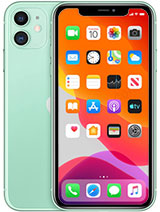

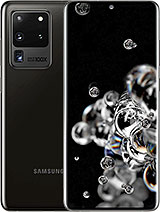
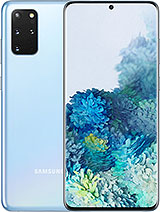

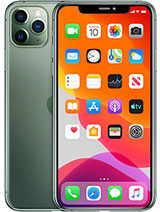
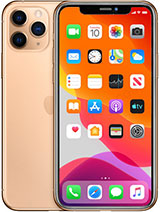
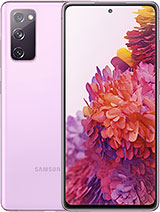
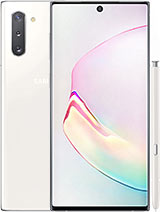





![Samsung Galaxy Tab Active 2 Rugged Tablet Review. [Is It Worth it?]](https://img.youtube.com/vi/XUCvgwa7Gxc/maxresdefault.jpg )

















